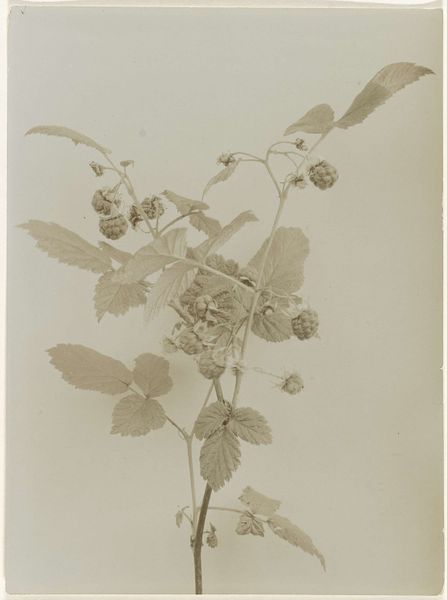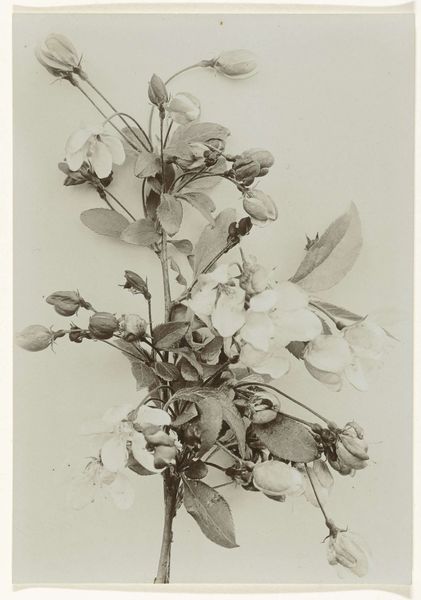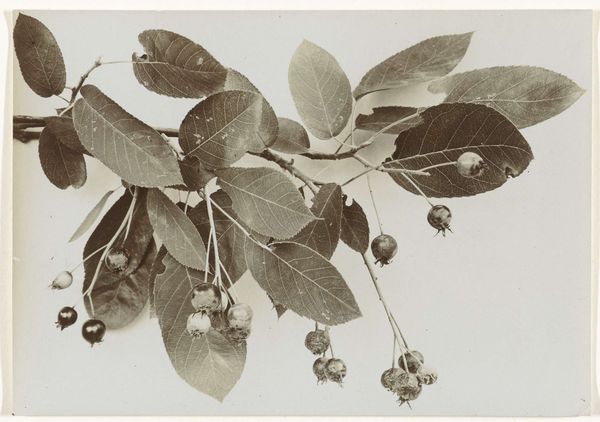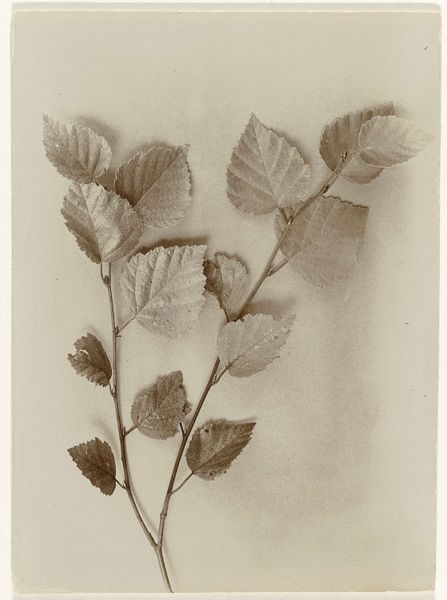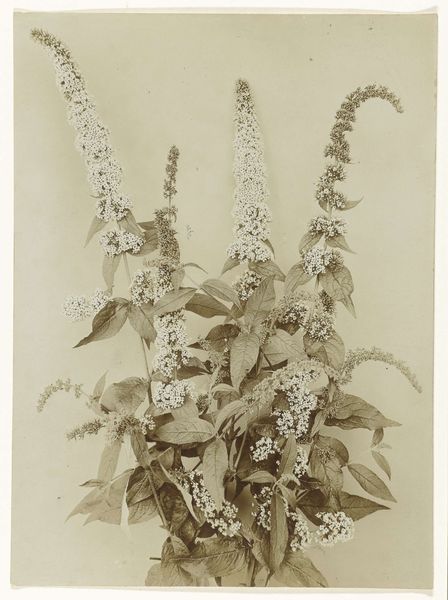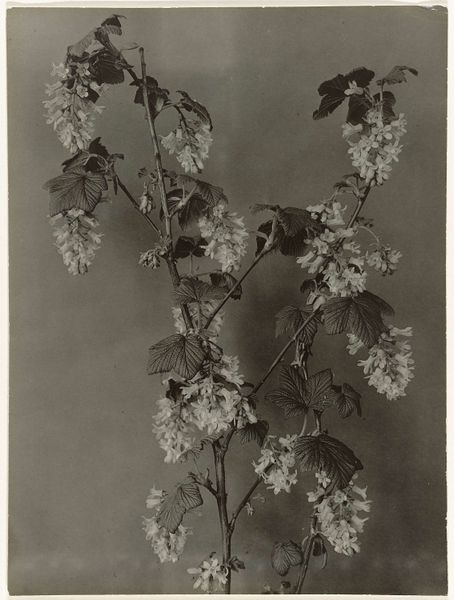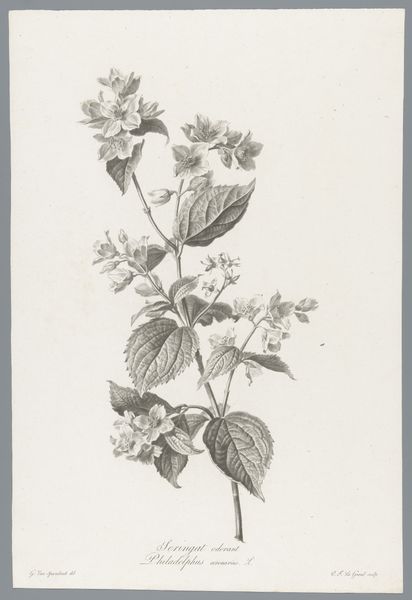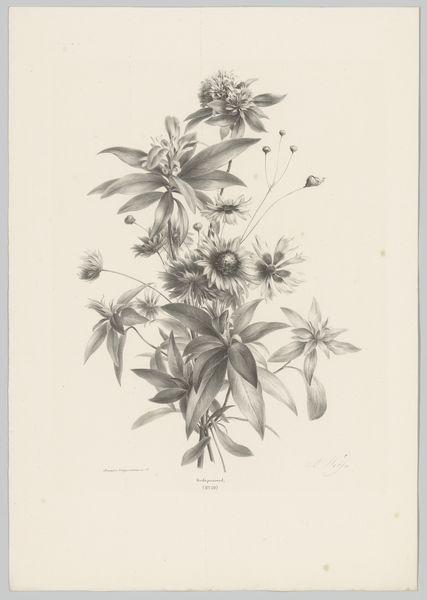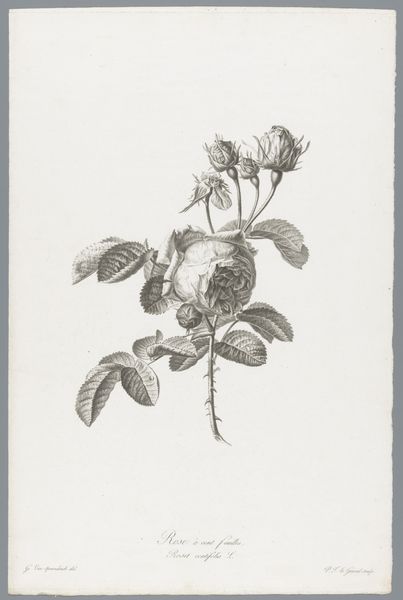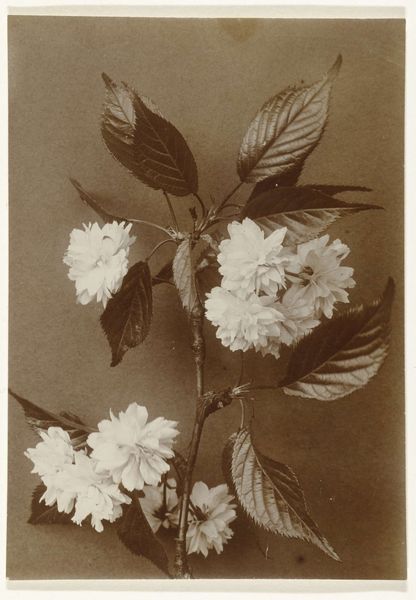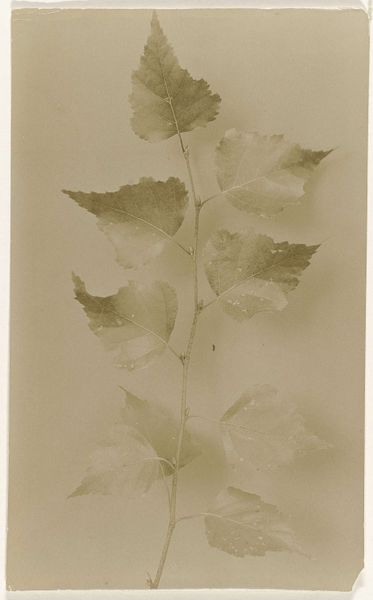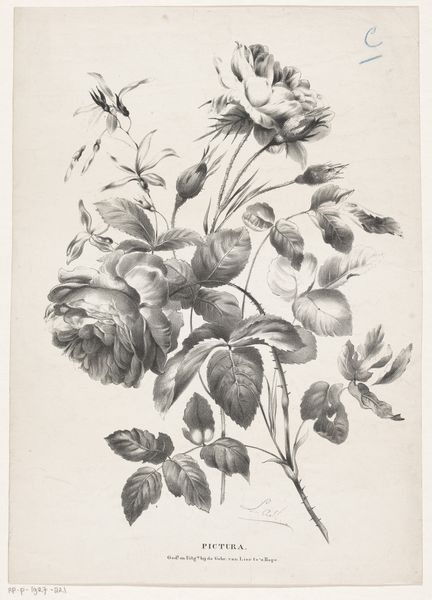
paper, photography
#
paper
#
photography
#
floral photography
#
botanical photography
Dimensions: height 177 mm, width 222 mm
Copyright: Rijks Museum: Open Domain
Curator: Before us, we have Richard Tepe’s “Tak van een haagbeuk,” or "Branch of a Hornbeam," dating roughly from 1900 to 1930. It’s a striking photographic study rendered on paper, currently residing here at the Rijksmuseum. Editor: My first impression? This image is remarkably delicate. The muted sepia tones create a sense of profound stillness. It has this quiet strength. Curator: That stillness resonates. Tepe captures more than just botanical accuracy; there’s a melancholic undercurrent here, a trace of fin-de-siècle sensibility. Consider how the hornbeam, in some traditions, is associated with resilience but also with holding fast to old ways. Editor: You’re right, there's something inherently bittersweet to the sepia itself; a symbolic colour of nostalgia. Looking at the composition, the branch bisects the frame, offering both a linear severity and, simultaneously, a cascade of textures. The careful arrangement of the leaves and seeds emphasizes form. It's almost a diagram of organic geometry. Curator: Precisely, this blending of scientific observation and artistic arrangement points to the era's preoccupation with classifying and understanding the natural world. These botanical photographs gained popularity not only because they were informative but also as testaments to human ability to harness photographic techniques. It reflects on humanity's persistent dialogue with nature and change. Editor: And there’s that constant shift in scale. The vein in each leaf. This close attention shifts to a branch and overall form that moves within its photographic plane. And in this sense it captures a constant dialectic of details. Curator: I agree. The botanical photography movement, beyond the artistic arrangement, was tied to conveying a message of nature's importance for all levels of society. It represented the beauty and scientific curiosity of nature during a transformative period. Editor: Examining it more closely now, the textures really come alive—it moves past diagram to embrace this full natural thingness and reminds me of the power of artistic composition and human vision. Curator: It's certainly given me a fresh appreciation for the intersections of science, culture, and the quiet beauty within a single branch. Editor: And I am reminded of just how potent a subtle study of form can be; a simple rendering into enduring meaning.
Comments
No comments
Be the first to comment and join the conversation on the ultimate creative platform.

